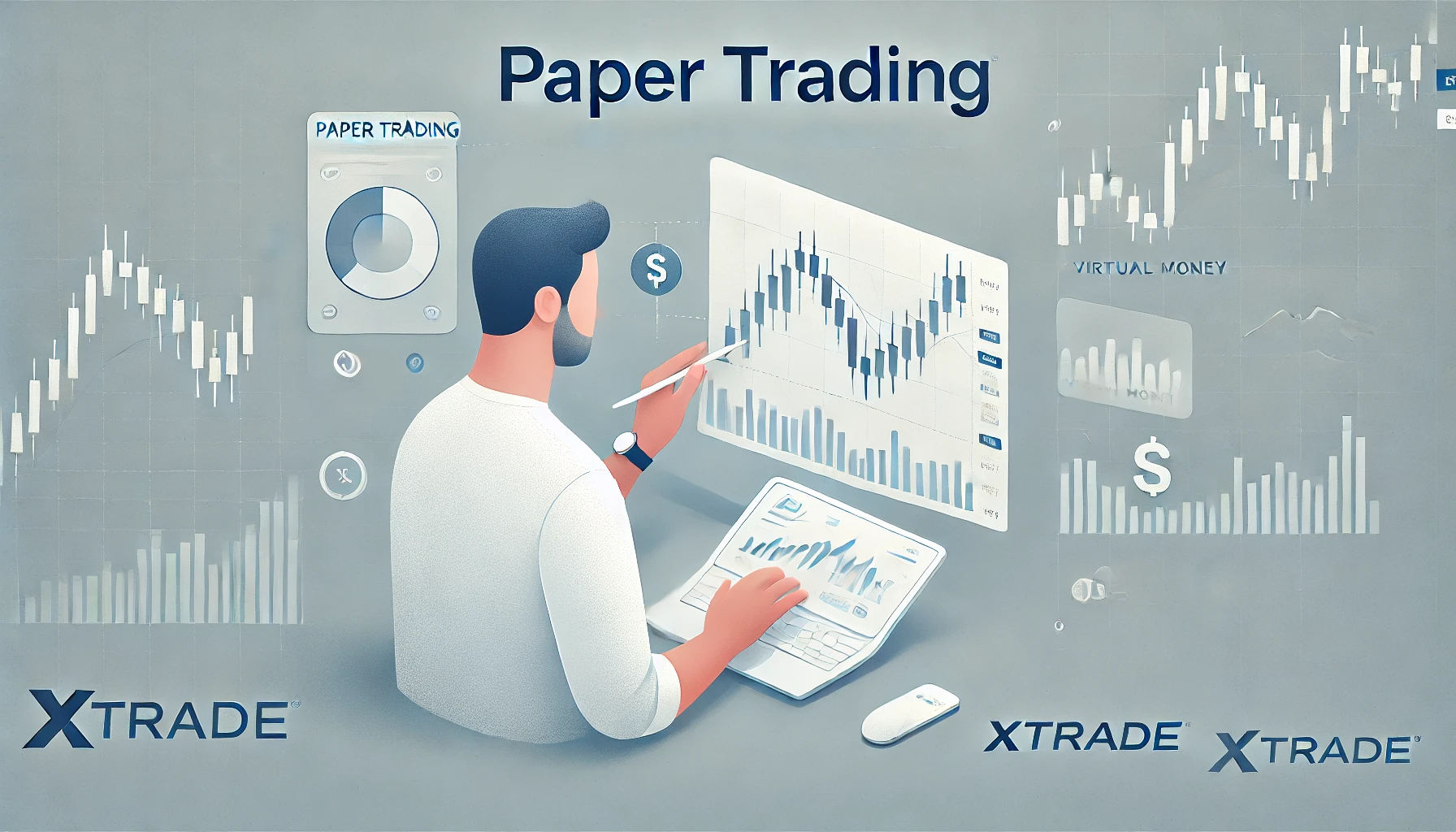Trading in financial markets can be exciting and profitable, but it also comes with risks. Many new traders jump into live trading without a proper understanding of strategies, risk management, and market behavior, often leading to losses. Paper trading offers a perfect solution—a way to practice and refine trading skills without risking real money
In this article, we will explore what paper trading is, why it is essential, how to get started, its advantages, limitations, and best practices to maximize its benefits

Paper trading, also known as simulated trading or demo trading, is a method where traders practice executing trades in a risk-free environment using virtual money. It allows traders to test their strategies under real market conditions without putting actual capital at stake.
Historically, traders would track their trades on paper (hence the name "paper trading"), but today, many platforms provide real-time demo accounts where traders can practice using simulated funds
Unlike backtesting, where strategies are tested against historical data, paper trading allows traders to experience real-time market movements without financial risk
1. Risk-Free Learning Experience
2. Strategy Testing in Real Market Conditions
3. Understanding Market Behavior
4. Mastering Trading Tools & Platforms
5. Developing Discipline & Emotional Control
| Feature | Paper Trading | Live Trading |
|---|---|---|
| Uses Real Market Data | ✅ Yes | ✅ Yes |
| Requires Real Money | ❌ No | ✅ Yes |
| Emotional Impact | ❌ No | ✅ Yes |
| Includes Slippage & Spread | ❌ No | ✅ Yes |
| Risk of Capital Loss | ❌ No | ✅ Yes |
| Learning & Practice | ✅ Yes | ✅ Yes |
There are many platforms offering paper trading accounts. Some of the best include:
❌ No Emotional Impact – Without real money at stake, traders don’t feel the psychological stress of gains/losses
❌ Execution Differences – Live trading includes slippage, spreads, and liquidity issues not always reflected in demo accounts
❌ Unrealistic Order Fills – Orders may execute at ideal prices, which doesn’t always happen in real trading
❌ False Confidence – Traders may become overconfident if they don’t account for real trading conditions.
💡 Solution: Transition gradually from paper trading to real trading by starting with small capital and strict risk management
At XTrade, we provide a powerful paper trading environment where traders can:
Paper trading is a valuable tool for learning how to trade without financial risk. It helps new traders build confidence, refine strategies, and develop discipline before entering live markets.
However, while it is an essential stepping stone, paper trading cannot fully replicate the emotions and real-world challenges of live trading. To succeed, traders must transition gradually, incorporating proper risk management and emotional control when moving to real accounts.
Whether you are a beginner or an experienced trader testing new strategies, paper trading remains an indispensable tool for achieving long-term trading success.
Trade Smart, Start with Paper Trading!
Please feel free to contact us. We will get back to you with 1-2 business days. Or just call us now